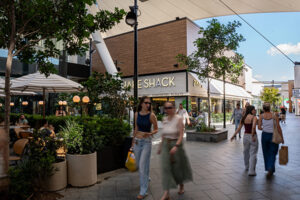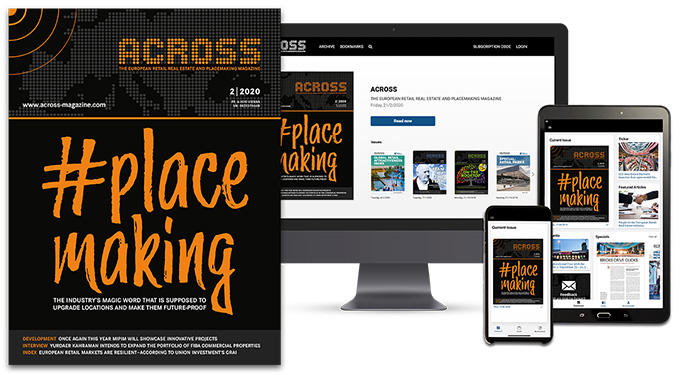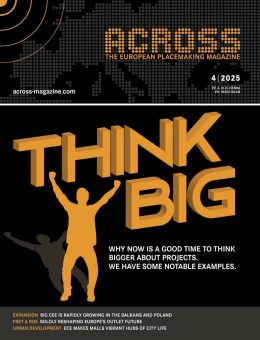ACROSS: Professor Koller, you conduct research into the development of the consumer world. What will be decisive for consumer when shopping in 2025?
MONIKA KOLLER: The consumption of products or services can no longer be reduced to functional aspects such as price or quality. Our research clearly shows that consumers are seeking value, in other words, a benefit that extends beyond the product itself. Let’s take the example of smart phones: Functionality and value for money are, of course, what count here. However, emotional factors – such as the feeling of owning a modern, aesthetically pleasing device – or social aspects, such as the expression of status through the brand, are just as relevant. These so called value dimensions – functional, economical, emotional, social, or even ecological – are just as relevant for certain consumer segments. What counts for one person may be irrelevant for another. That is why we speak of a fragmented consumer world in which there is not one consumer, but many different needs and motives.
ACROSS: What changes in consumer behavior have been particularly clear over the past five years?
KOLLER: The past few years have been characterized by an extremely high level of dynamism. These upheavals are directly reflected in consumer behavior. The increasing ambivalence is particularly striking: On the one hand, many people react to uncertainty with caution and restraint – they save, plan more consciously, and pay more attention to price and necessity. On the other hand, we are also seeing an opposing trend: The need to treat oneself to something right now as a way to counter uncertainty with something positive. That creates an area of tension between consumerism and hedonistic consumption – “I live in the now, who knows what tomorrow will bring.” This contradiction is an expression of an adaptive reaction. Consumption can become an outlet for compensating for emotional and social needs, such as the desire for control, stability, or a sense of belonging.

Monika Koller
Monika Koller is Head of the Institute for Marketing &
Consumer Research at the Vienna University of
Economics and Business.
ACROSS: What impact has this development had on brick-and-mortar and digital retail?
KOLLER: More than ever, retailers need to address the following question: What does my target group expect – functionally, economically, emotionally, and socially – from my product range? That question can no longer be answered in general terms, as consumer behavior today is significantly influenced by individual life realities and value systems. If you want to be successful in the long term, you have to deal with these diverse expectations and translate them into product structure, communication, and touchpoints. Additionally, there is a significant shift in communication behavior. The younger generations, in particular, are naturally active on social media platforms.
ACROSS: To what extent can price perception and emotions still be separated today?
KOLLER: Price is a key factor, but it is no longer the sole deciding factor. It is becoming increasingly emotionally charged. Promotions such as Black Friday are not just about low prices – they are also about the event character and the emotional narrative surrounding it: “Today only!”, “Last chance!”, “Don’t miss out on the best offer!” Behind this are psychological triggers such as FOMO – the Fear of Missing Out. At the same time, we are observing a genuine desire to hunt for bargains. Anyone who has made a “good deal” feels pride, joy, and sometimes even social recognition when discussing it. This emotional charge is a powerful lever that retailers can use strategically, provided it is implemented credibly and appropriately for the target group.
ACROSS: It is often said that the traditional customer segments – luxury vs. discount – are becoming increasingly blurred. Do you share that view?
KOLLER: Today, it is often about the perceived flexibility in our actions, which is partly learned, including through changes in communication behavior, for example through the use of social media. In part, it is also about signaling one’s own personality through consumption. The literature refers to the so-called “extended self”: Through the brands and products I surround myself with, I also express something about myself. Especially in unstable times, when you don’t have everything under your control, consumption often reflects the fact that you are self-determined to shape your consumer world as best you can. Psychology offers various explanations for these dynamics. For example, even during the pandemic, the need to exchange ideas with others and maintain connections became apparent. Today, there is more flexibility, also when it comes to thinking about what is possible. As a result, consumer behavior is not straightforward but rather diverse, varying from individual to individual, which underscores the importance of segmentation in marketing thinking.
ACROSS: Will the observed polarization between discount and premium continue to intensify? What effect would that have on the retail landscape?
KOLLER: That depends on whether retailers succeed in creating relevant offers with real added value in between. The market structure today is characterized by an enormous variety of offerings and constant innovation. In this environment, brands and retail companies are required to precisely define and consistently implement the value dimensions relevant to their target groups. Marketing research offers concrete approaches, for example, through so-called value monitoring. That enables the regular determination of which aspects customers perceive as creating value. Qualitative methods, in particular, such as in-depth interviews or ethnographic studies, help answer the “why” questions behind consumption. These findings can, in turn, be incorporated into the product range, pricing strategy, or store design.
ACROSS: Brand experience is increasingly seen as a key driver of consumption. How can the discount sector, which is traditionally more functional, respond to that?
KOLLER: The topic of experience is also closely tied to understanding what exactly constitutes an excellent consumer experience for the target group. These can be multidimensional values or benefit dimensions. The exciting aspect is that research indicates that value dimensions can influence other relevant consumer variables, such as the value-loyalty link, i.e., loyalty behavior. This means that if, for example, a brand provides me with value in the various dimensions, this can also contribute to loyalty towards the brand. So, it’s often not just about a one-off consumer experience, but rather about creating sustainable value experiences.






